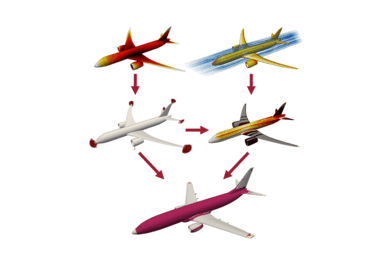Levels of our atmosphere's main cleansing agent -- the hydroxyl radical (OH) -- have first risen and then fallen substantially since 1978, an international team of researchers led by an MIT atmospheric scientist reported in the May 4 online issue of Science. This chemical destroys air pollutants and many gases involved in ozone depletion and the greenhouse effect.
These fluctuations, plus the fact that the chemical's levels are higher in the southern hemisphere than in the more industrialized northern hemisphere, are puzzling to researchers. "Neither of these types of changes over space and time are expected from current theory. The results are a surprise," said Ronald G. Prinn, TEPCO Professor, head of the Department of Earth, Atmospheric and Planetary Sciences and the study's lead author.
Professor Prinn warned that the new data should serve as a wake-up call, not only to atmospheric scientists, but also to policy makers who depend on information about this chemical when considering legislation that would affect the global warming potential of many gases, including methane. "If we don't understand how OH is going to behave in the future, we can't decide how to factor it in to discussions on global warming," he said.
IMPORTANT CLEANSER
The hydroxyl radical (OH) is "by far the most important chemical species in the lower atmosphere," Professor Prinn said. OH exists only fleetingly in the lower atmosphere and it cannot now be measured directly at the regional to global scale. But its levels can be inferred from long-term global measurements of a man-made gas that it obliterates.
"If our current analysis is correct, it implies that present understanding of OH chemistry, and hence the capacity of the atmosphere to remove many anthropogenically and naturally produced trace gases, is incomplete," the researchers wrote. "This has important implications for mitigation of air pollution and climate change.
"These variations imply important and unexpected gaps in current understanding of the capability of the atmosphere to cleanse itself," wrote Professor Prinn and colleagues from the University of California at San Diego, the Georgia Institute of Technology, the Commonweath Scientific and Industrial Research Organization of Victoria (Australia), the University of Bristol (United Kingdom) and Cape Grim Baseline Air Pollution Station in Tasmania (Australia).
FLUCTUATING LEVELS
The researchers found that on average, from 1978 to 2000, the concentration of OH in the southern hemisphere was about 14 percent higher than that of the northern hemisphere. Globally, OH increased from 1978 until around 1988 and then declined.
There are several possibilities that would explain the results. Professor Prinn suggested that researchers look at the role of aerosols -- tiny particulates -- that could be reacting with and removing OH and its related molecules from the atmosphere. The tiny particles also may be reflecting and absorbing the sun's ultraviolet radiation, which would in turn lower OH production rates.
Because the changes in the global concentration of OH are dominated by changes in the northern hemisphere, where most of the world's industrialization and emission of human-made gases occurs, the variations in OH are probably driven more by human-made than natural causes, the researchers noted. A changing mix of air pollutants in the northern hemisphere such as nitrogen oxides and carbon monoxide, along with aerosols, may be implicated.
Professor Prinn said that more precise global measurements of short-lived air pollution gases around the world is needed for greater understanding of OH levels over time. The researchers call for additional global long-term measurements that match the timeframe in the study published in Science.
This work is supported by NASA; the Department of Environment, Transport and the Regions of the United Kingdom; the Commonwealth Scientific and Industrial Research Organization and the Bureau of Meteorology, both of Australia; and the US National Oceanic and Atmospheric Administration.
A version of this article appeared in MIT Tech Talk on May 9, 2001.





